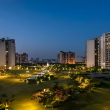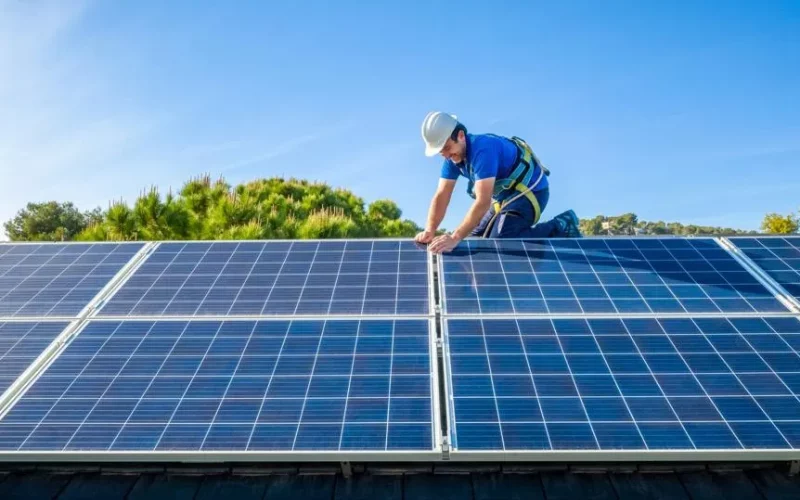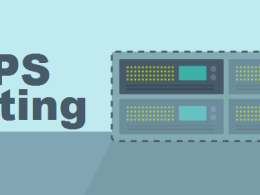Introduction
Pakistan has a sunny climate with long summer days, making it an ideal country for solar energy. From Karachi to Lahore and across rural areas, thousands of homes and businesses are switching to solar power to save electricity costs. But one common question most people ask is: how much electricity can solar panels actually produce in Pakistan?
In this article, we will explain in simple words how solar panels work, how much energy they can generate based on Pakistan’s weather, and what factors affect their performance.
Understanding Solar Energy Production
Solar panels work by converting sunlight into electricity through photovoltaic (PV) cells. The more sunlight your panels receive, the more electricity they generate. This production is measured in kilowatt-hours (kWh), which is the same unit used in your electricity bill.
For example:
- A 1kW solar system can produce about 4 to 5 units per day.
- A 5kW solar system can generate 20 to 25 units per day.
- A 10kW system can produce 40 to 50 units daily, depending on location and weather.
This production may vary slightly depending on season and city.
Pakistan’s Solar Potential by Region
Pakistan receives 1,500 to 2,700 hours of sunlight per year, with an average solar radiation of 5.3 kWh/m²/day. This means solar systems perform well in most regions. Here’s a rough idea of solar potential in different cities:
| City | Sunlight Hours/Day | Production Efficiency |
|---|---|---|
| Lahore | 5.0 – 5.5 hours | Good |
| Karachi | 5.2 – 5.8 hours | Very Good |
| Islamabad | 5.4 – 6.0 hours | Excellent |
| Quetta | 6.0+ hours | Excellent |
| Peshawar | 5.0 – 5.6 hours | Good |
Even on cloudy days, solar panels still produce power, though with slightly reduced efficiency.
How Panel Type Affects Output
The amount of electricity produced also depends on the type and quality of solar panels you use. Here are common types in Pakistan:
- Monocrystalline Panels: High efficiency and good in small spaces. These can produce more power even in low light.
- Polycrystalline Panels: Slightly less efficient but more affordable. Work well in areas with strong, consistent sunlight.
- Bifacial Panels: Absorb light from both front and back, giving better output in reflective surroundings like white roofs or open fields.
If you’re planning to store this energy, pairing your panels with a reliable battery is essential. In this case, understanding storage options and checking today osaka battery price in pakistan can help you budget properly for the complete setup.
How Weather Conditions Impact Solar Output
Pakistan’s climate helps solar systems work efficiently, but seasonal variations can affect electricity production. Here’s how:
- Summer (April to September): Maximum output. Systems run at full potential due to long daylight hours.
- Winter (November to February): Reduced output. Shorter days and fog in certain regions like Punjab can lower production.
- Monsoon Season: Cloudy days reduce sunlight but don’t stop power generation entirely. Your system still works, just at 60–80% of peak capacity.
Proper panel placement and system design help reduce the impact of seasonal changes.
How Many Units Will You Get Per Month?
Let’s break it down based on average system sizes commonly installed in homes:
| System Size | Daily Units (avg.) | Monthly Units (approx.) |
|---|---|---|
| 3kW | 12 – 15 units | 360 – 450 units |
| 5kW | 20 – 25 units | 600 – 750 units |
| 10kW | 40 – 50 units | 1,200 – 1,500 units |
Tips to Maximize Solar Output in Pakistan
-
South-Facing Panels: Always install your panels facing south to capture maximum sunlight.
-
Clean Panels Regularly: Dust and bird droppings can block sunlight. Cleaning them twice a month is recommended.
-
Install a Tilted Mounting Structure: Proper angles improve energy absorption. In Pakistan, a tilt of 25–30 degrees is ideal.
-
Use a Hybrid Inverter with Battery Backup: This helps you store unused energy and stay powered during grid failures.
-
Monitor Performance via App or Inverter Display: Regular tracking helps identify any drop in performance early.
Is Solar Worth It in Pakistan?
Absolutely! The return on investment (ROI) is strong. Most households recover their solar installation cost in 3 to 5 years, and then enjoy free electricity for up to 20 years.
With rising WAPDA unit prices and frequent power outages, solar panels are now more of a necessity than a luxury. Systems are becoming more affordable, especially if you plan wisely and check component prices—like comparing today osaka battery price in pakistan to get value for your money.
What About Net Metering in Pakistan?
If you install a solar panel system that generates more electricity than you use, net metering can help you save even more money. Net metering is a government-approved system that lets you sell extra solar electricity back to the grid. In return, you get credits on your monthly electricity bill.
To apply for net metering, you’ll need:
- A solar system of at least 3kW
- A three-phase electricity meter
- Installation by a certified solar installer
Once approved, any extra units your system generates are counted and subtracted from your total usage. Over the course of a month, this can reduce your bill to almost zero. With growing awareness and support from government bodies like NEPRA, more people across Pakistan are taking advantage of this system.
Net metering also helps make your solar system more cost-effective, reducing your payback time by up to a year.
Conclusion
Solar panels in Pakistan can generate plenty of electricity thanks to the country’s sunny weather. On average, a well-installed system produces 4 to 5 units per kW per day, making it perfect for residential and commercial use. By choosing the right panel type, inverter, and battery setup, and maintaining your system properly, you can make the most of solar energy year-round.
With government support for net metering and dropping solar component prices, now is the perfect time to make the switch to renewable energy.
Note: You can get all types of information on worldwidedigest.com












